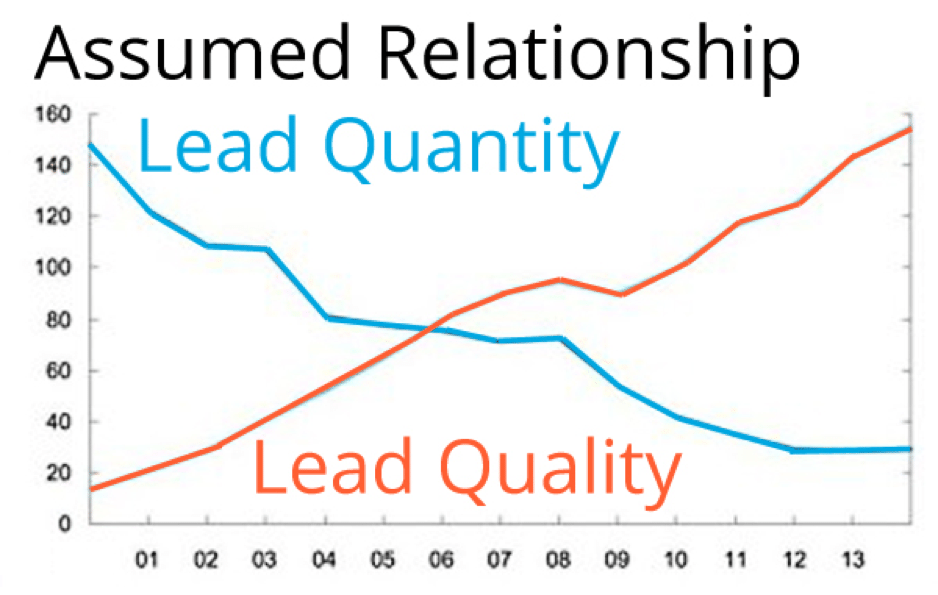We have all been there, whether working in an agency or in-house, when the question comes up – “What’s more important to you, lead quantity or lead quality?” Nine times out of ten the answer is “both!” and while this may not seem helpful, or even possible, there are ways to achieve an effective balance.
Most marketers assume that there is an inverse relationship between lead quantity and quality. I have found that this isn’t necessarily true.

Here are 3 recommendations to help you simultaneously improve both lead quantity and quality.
1. Look at all the numbers
Often times we fall into the trap of looking at the same set of numbers to determine the success of a program or if we are achieving our lead generation goals. For example, one common metrics is looking at the percentage of total leads that turn into qualified leads.
Recently we ran a landing page test for a client where we tested two different Calls-to-Action: “Request a Demo” vs. “Download a Whitepaper”. At the end of that test Request a Demo won by a huge margin – based on the percentage of total leads that were qualified. However when we looked at the cost per qualified lead, “Download a Whitepaper” actually won because the sheer volume of leads was so much higher that, even with a much lower percentage of qualified leads, we increased the total number of qualified leads.
Make sure you are consistently evaluating all aspects of your lead results, including: conversion rate, volume, and cost.
2. Talk with sales
Beyond just looking at the numbers, there are important human factors to consider such as the sales team. By communicating with sales, marketers can learn a huge amount of invaluable information such as:
- Is sales able to follow up and qualify the number of leads we are sending them?
- Is follow-up being delayed or leads over-looked at face value because sales is overloaded?
- Can any of the qualification process be automated to help alleviate a bottleneck in the lead flow?
- Is there a certain part of the marketing program that is disproportionately poor performing?
- Are there consistent concerns or unanswered questions that could have been communicated earlier in the process by marketing?
Taking the previous example into consideration again, while the call to action of “Download a Whitepaper” may look great on paper, if sales is not able to follow-up with the leads in a timely and thorough manner, then the additional qualified leads will have no impact on bottom-line business results. Volume is not always the best solution.
3. Continue to re-evaluate and re-assess
Business priorities change, marketing and sales departments change, and your audience’s preferences will change overtime. Due to this it is vital to continually re-assess what is working best to deliver the optimal balance of lead quantity and lead quality in order to achieve your business goals.
For example, if the company loses key sales people, then the volume of leads driven by “Download a Whitepaper” may no longer be the best CTA to use, at least until the business can hire the required sales personnel to work those leads.
Strike a Balance
In order to strike the best balance in improving both lead quantity and quality, marketers must analyze a comprehensive set of lead data, partner with sales, and take into consideration changing business needs. By utilizing these processes we can confidently deliver upon results when faced with the response: “I want both!”


